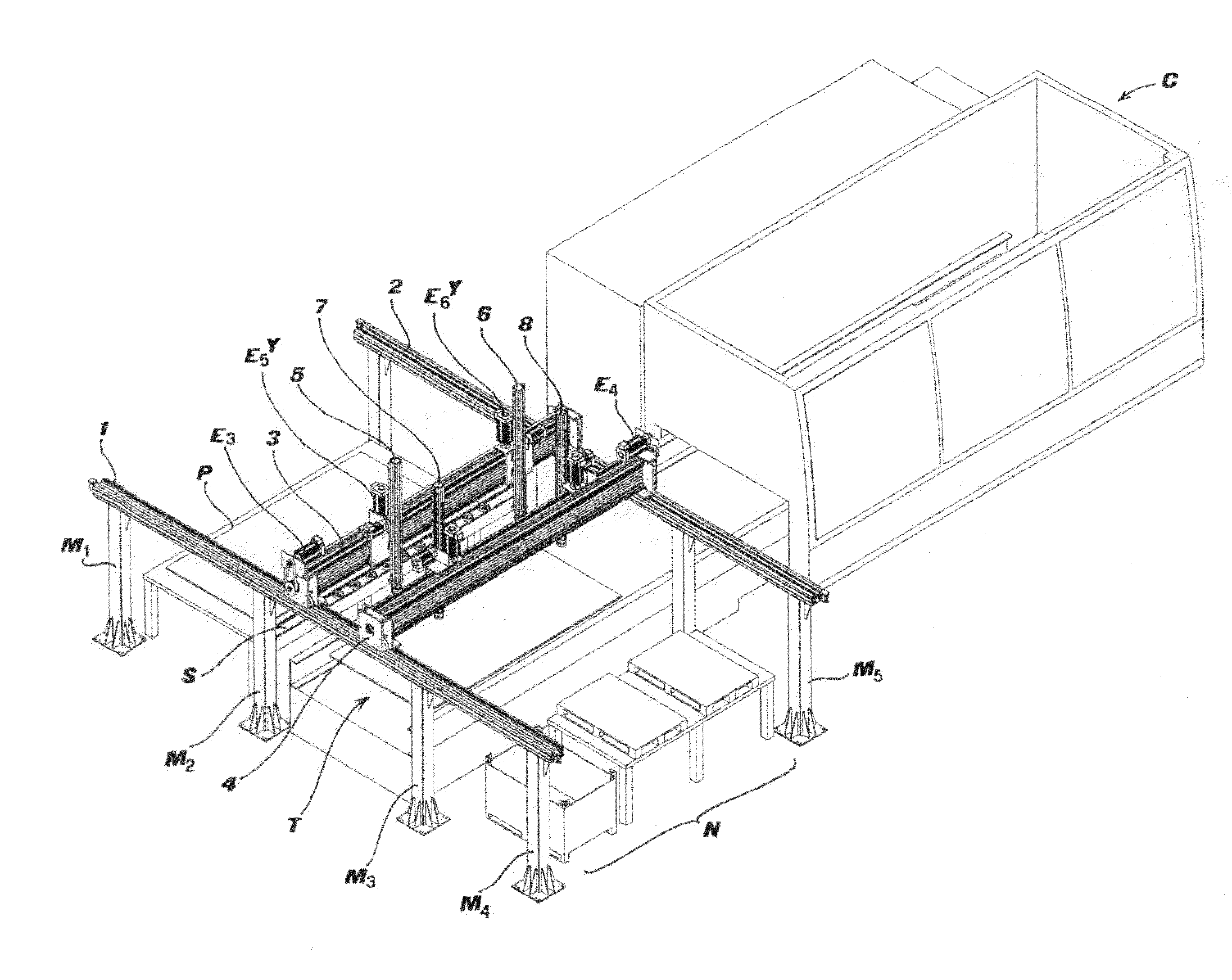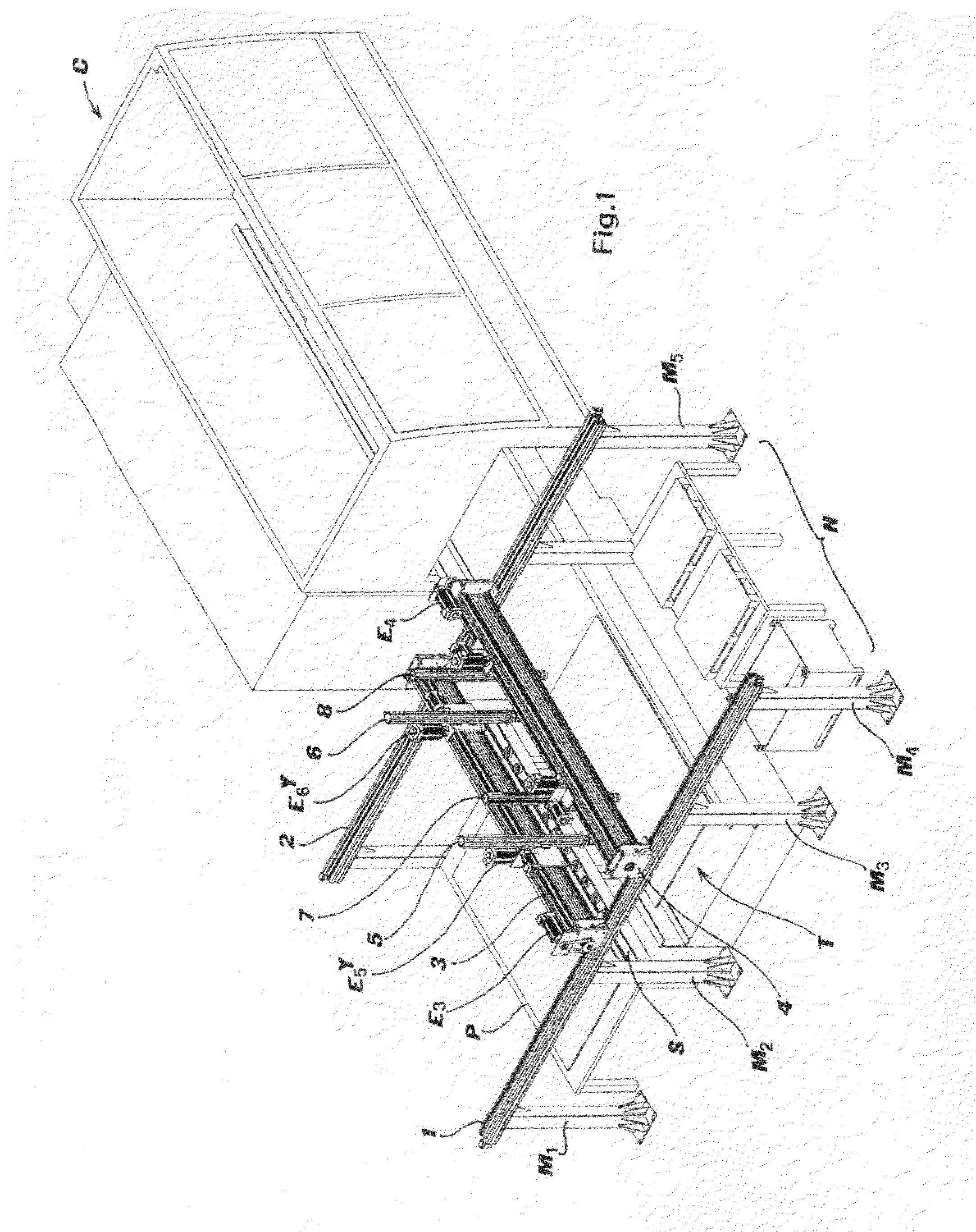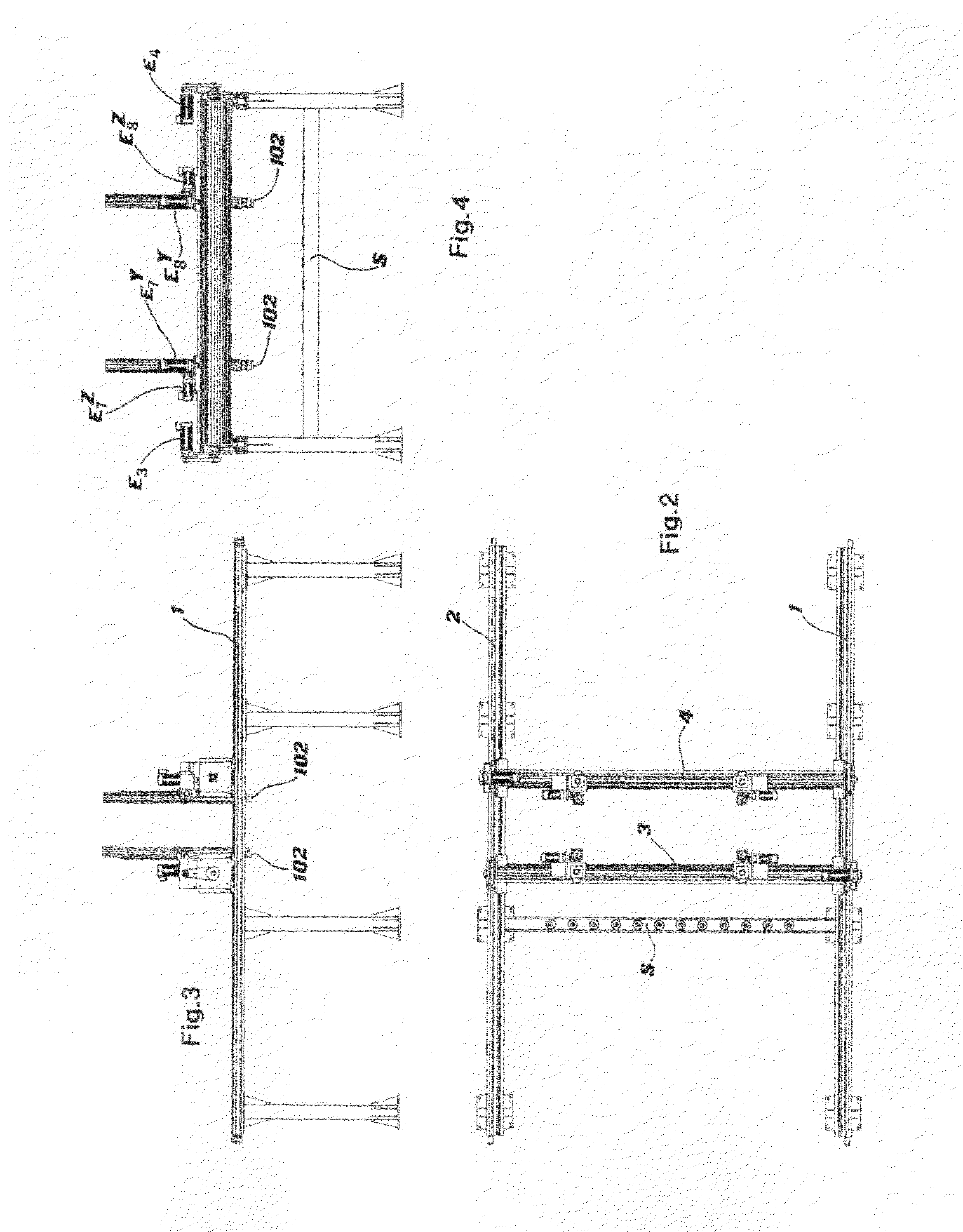Loading/unloading system serving a sheet cutting centre, feeding tray therefor and relative handling method
a technology of cutting centre and feeding tray, applied in the direction of metal-working feeding device, work trasfer device, metal-working auxiliary device, etc., can solve the problems of inability to impart an adequate force for lifting the weight of thick metal sheets, inability to operate the forklift correctly, and cost and performance time.
- Summary
- Abstract
- Description
- Claims
- Application Information
AI Technical Summary
Benefits of technology
Problems solved by technology
Method used
Image
Examples
Embodiment Construction
[0040]FIG. 1 schematically shows a cutting centre C provided with a conventional feeding tray T, whereon the virgin sheet and the cut-in sheet are supported for the introduction into and removal from cutting centre C.
[0041]Across feeding tray T, in a way conventional per se, two sliding rails 1 and 2 are provided, supported at the desired height by respective posts M1-Mn.
[0042]According to the invention, sliding rails 1 and 2 support a pair of sliding bridge cranes 3 and 4, each in turn being provided with a transversal sliding guide for a pair of robotized hands, 5, 6 and 7, 8, respectively.
[0043]For the movement on rails 1 and 2, each of bridge cranes 3 and 4 is provided, in a way known per se, with an electric handling motor (X axis), E3 and E4, respectively.
[0044]Each robotized hand 5-8 is configured so as to be able to translate on its own bridge crane, but also to translate vertically for lowering or raising a pick-up head arranged at the lower end.
[0045]For such purpose, elec...
PUM
| Property | Measurement | Unit |
|---|---|---|
| Thickness | aaaaa | aaaaa |
Abstract
Description
Claims
Application Information
 Login to View More
Login to View More - R&D
- Intellectual Property
- Life Sciences
- Materials
- Tech Scout
- Unparalleled Data Quality
- Higher Quality Content
- 60% Fewer Hallucinations
Browse by: Latest US Patents, China's latest patents, Technical Efficacy Thesaurus, Application Domain, Technology Topic, Popular Technical Reports.
© 2025 PatSnap. All rights reserved.Legal|Privacy policy|Modern Slavery Act Transparency Statement|Sitemap|About US| Contact US: help@patsnap.com



